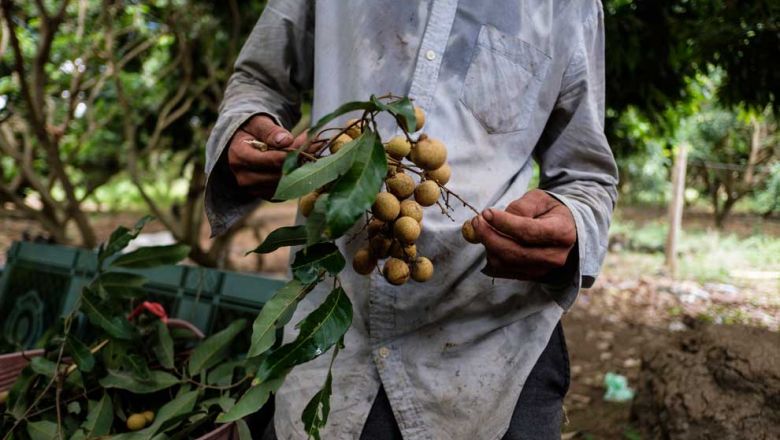Agriculture share of Kingdom’s GDP on track to hit 32 per cent
Agriculture share of Kingdom’s GDP on track to hit 32 per cent
The agricultural industry is on track to account for 32 per cent of Cambodia’s gross domestic product (GDP) by the end of the year as more of the Kingdom’s workforce moves into the sector, Royal Academy of Cambodia economics researcher Ky Sereyvath has said.
Without citing official figures, Sereyvath predicted that the agricultural labour force had ballooned between 30 and 40 per cent during the p of the Covid-19 crisis.
He said: “The growth of the agricultural sector is due to the fact that some of the remaining labour force from the services sector turned to agriculture, with the workforce integration leading to a larger production volume.”
The industrial sector is “set to grow around 36 per cent”, while the services sector as a whole “may shrink between 28 and 30 per cent”, he said, without specifying a timeframe. Domestic tourism services and online food delivery services should enjoy moderate growth.
Sereyvath said: “The food processing industry, fruit and vegetable processing are prominent sub-sectors – the top segments after garments. Pepper, mango, fish and meat processing will all absorb a greater market share.”
The government predicted that the Cambodian economy will shrink by 1.9 per cent this year due to fallout from Covid-19’s unremitting advance, which is upending just about every industry on a worldwide scale.
The industrial and services sectors are also set to witness negative growth.
Minister of Agriculture, Forestry and Fisheries Veng Sakhon said the government is aiming for a three per cent annual growth rate of agricultural value added – the net output of the agricultural sector after adding up all outputs and subtracting the value of intermediate inputs.
He said the government also aspires to increase agricultural labour productivity – the annual output per agricultural worker – from $1,839 last year to $4,625 by 2030.
“The agricultural sector is an important engine of economic growth and could enjoy a one per cent surge this year.
“Agriculture remains crucial considering the downswing experienced by industry and services. Today, only agriculture could feasibly revive the economy,” Sakhon said.
He said Cambodian agricultural product exports blossomed from nearly $1 billion in 2013 to $1.5 billion last year.
“Agricultural potential remains strong, productivity is still high and return migration flows to rural areas are on the rise. This will reinforce growth in the agricultural sector during the Covid-19 era.
“Today, farmers have gained impetus to increase crop, food, fish and meat production given the heightened demand from consumers and waning imports,” Sakhon said.
Ngin Chhay, the director-general of the ministry’s General Directorate of Agriculture, told a news conference last week that the government is diversifying its agricultural sector with a vision to become more modern, competitive, inclusion, climate-resilient and sustainable.
He said Cambodia’s agricultural product exports have risen annually, with significant momentum in the last six years – from over 3.44 million tonnes in 2014 to more than 4.8 million tonnes last year.
To date, he said, the Kingdom has exported 61 agricultural products to 59 countries around the world.
Chhay said: “The increase in export volume is a reflection of the positive changes in both the quantity and quality of agricultural production in Cambodia, as well as the indispensable role sanitation and phytosanitation play in linking products to foreign markets.”














